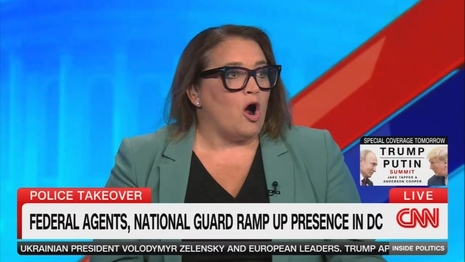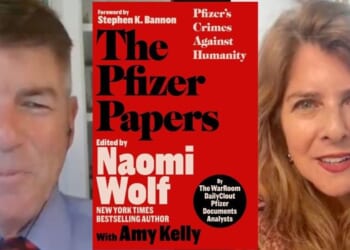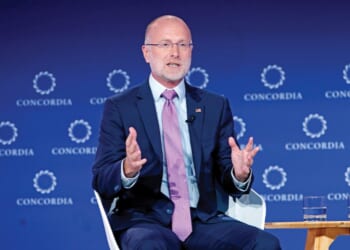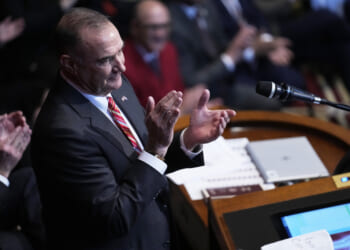Some of the most hackish elements of the liberal media had pivoted to outright lying and denying that Washington, D.C. had a major crime and safety problem. That much was clear during Thursday’s Inside Politics on CNN as network correspondent Gabe Cohen attacked and scoffed at National Guard troops deployed to the district. He was joined by Axios contributor Margaret Talev who all but denied the existence of crime in the city, while claiming the Guard deployment was roving authoritarianism.
Early in his comments, Cohen blamed “the FBI agents, the DEA agents, Border Patrol, those guys” for “the more tense moments” shared on social media from the night before, instead of the far-left and bought protesters that assailed their position.
He then targeted the National Guard troops by suggesting they weren’t doing anything at all except taking pictures of themselves:
There’s also this surge in National Guard troops, which I was just outside Union Station, the biggest train station in D.C. About a dozen members of the National Guard were out there with four Humvees. The goal for those guys is really visibility. That’s what they want. They just want essentially a photo op.
At this point, I can tell you at one point I actually saw a National Guard official show up with a camera. Encourage the troops there to get out of their vehicles to essentially be active doing things. They were taking photos.
“Whether or not it’s deterring crime. I can’t say,” Cohen scoffed as he proceeded to downplay the existence of the homeless encampment outside Union Station as just a hangout spot. “I do walk that route on a daily basis. There are often people sort of outside the station hanging around. That wasn’t the case today.”
Contrast that with what Cohen said earlier in the day when he admitted locals had “a lot of concerns about crime around Union Station — people who are loitering outside.” Union Station was just a couple blocks or o from CNN’s D.C. studio.
On the Tuesday and Wednesday editions of CNN’s The Lead (respectively), Republican commentators had shared their stories of Union Station were Doug Heye hinted at the “girl brawl” and the “public masturbation” he was forced to see; and Scott Jennings witnessed a guy be murdered there.
 Back on Thursday, Talev followed up Cohen suggesting the National Guard deployment was part of a “march toward an authoritarian[ism]” and the “federalization of the capital city and perhaps other cities.”
Back on Thursday, Talev followed up Cohen suggesting the National Guard deployment was part of a “march toward an authoritarian[ism]” and the “federalization of the capital city and perhaps other cities.”
She went on to blatantly lie about the crime picture in D.C. and even claimed Anacostia, the district’s crime filled southeast quadrant wasn’t actually that bad:
But, for someone who’s living outside of Washington wondering, ‘Wow, is it really like this? A crime infested, dangerous, like war zone?’ The answer is no, not most parts of the city at all. And you can go online to a D.C. Government website and actually look at a map of where the federal – of where violent crimes and all crimes take place. And you can see that they are concentrated in a few patches in the central corridor of the city and in portions of northeast Washington, and a couple spots in southeast.
“[D]o people in those communities want a militarized police presence, or do they want, like, law enforcement officers who work for the city in those areas?” she chided.
Well Margaret, they do.
In an on-air report for The Lead on Tuesday, southeastern D.C. resident and community advocate Sandra Seegars told correspondent Brian Todd spoke that, “I think this is long overdue. I’ve been wanting the National Guard in this area for years…I like it, I love it, I feel safer already.”
The transcript is below. Click “expand” to read:
CNN’s Inside Politics
August 14, 2025
12:20:39 p.m. Eastern(…)
DANA BASH: What is what is actually happening out there?
GABE COHEN: Well look, there are a few aspects of the federal law enforcement asset surge that we’re seeing. One are the FBI agents, the DEA agents, Border Patrol, those guys who are out there each night, which has created some of the more tense moments.
There’s also this surge in National Guard troops, which I was just outside Union Station, the biggest train station in D.C. About a dozen members of the National Guard were out there with four Humvees. The goal for those guys is really visibility. That’s what they want. They just want essentially a photo op.
At this point, I can tell you at one point I actually saw a National Guard official show up with a camera. Encourage the troops there to get out of their vehicles to essentially be active doing things. They were taking photos.
BASH: Wow.
COHEN: That is really, it seems, about making a statement and whether or not it’s deterring crime. I can’t say. I do walk that route on a daily basis. There are often people sort of outside the station hanging around. That wasn’t the case today.
But in terms of overall deterrence, we know that they are ramping this up. They’re going to be more and more federal law enforcement officers who are going to be out on a daily and nightly basis. We expect it to continue to increase in the days ahead.
MARGARET TALEV: I think you know what Gabe’s talking about raises sort of the conversation that Washingtonians are having, which is, are these moves performative? Are they a slow march toward an authoritarian move around federalization of the capital city and perhaps other cities? Or are they somewhere in the middle? Is there going to are there going to be some legitimately stepped up law enforcement efforts in troubled parts of the city?
And like, I say, it’s too soon to say, sorry. That’s like a lame place filler. It is too soon to say. It’s been a couple of days.
But, for someone who’s living outside of Washington wondering, ‘Wow, is it really like this? A crime infested, dangerous, like war zone?’ The answer is no, not most parts of the city at all. And you can go online to a D.C. Government website and actually look at a map of where the federal – of where violent crimes and all crimes take place. And you can see that they are concentrated in a few patches in the central corridor of the city and in portions of northeast Washington, and a couple spots in southeast. And that that is where the overwhelming majority of dangerous crimes happen.
Does that match where this stepped up presence is being deployed? And do people in those communities want a militarized police presence, or do they want, like, law enforcement officers who work for the city in those areas?
(…)
















